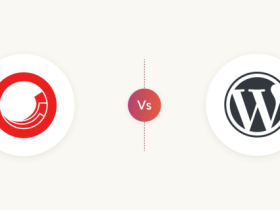Thinking about combining your insurance and investments? ULIP might be worth exploring. Here’s everything you need to know in simple terms.
Understanding ULIP
ULIP stands for Unit Linked Insurance Plan. So what is ULIP exactly? It’s basically a two-in-one financial product. You get life cover to protect your family, and at the same time, your money works in the market to grow over time.
Here’s how your premium works: Some of it goes toward buying insurance coverage. The rest gets invested in funds of your choice – could be stocks, bonds, or both. It’s like handling two financial goals with one product.
How ULIP Plans Actually Work?
You pay a premium, which could be every month, every quarter, or once a year. The company splits this amount between insurance and investment.
The insurance portion ensures your family receives a lump sum if something unfortunate happens to you. This is your basic protection layer.
The investment portion goes into market funds based on what you select. Maybe you prefer equity funds that invest in stocks. Or perhaps debt funds with bonds sound safer to you. You could even pick balanced funds that mix both.
Your invested money gets converted into units. Each unit has a value that moves up or down with market changes. This daily fluctuation is normal and expected in market-linked products.
Main Features Worth Knowing
ULIP plans offer insurance coverage alongside investment growth. You don’t have to juggle multiple products or policies.
You get to decide your investment direction. Comfortable with market ups and downs? Put more in equity. Prefer steady growth? Debt funds work better. The choice stays with you.
Markets keep changing, and so can your fund allocation. Most plans allow you to move money between different fund types without heavy charges. This flexibility helps you adjust to life changes.
Everything about your investment is visible. You can check your units, their current worth, and where exactly your money sits. No hidden surprises.
Tax benefits make ULIPs attractive too. Your premiums can reduce taxable income under Section 80C. When the plan matures, you typically don’t pay tax on the amount received, following Section 10(10D) rules.
Different Fund Options Available
- Equity Funds put your money in stock markets. Returns can be high, but markets swing both ways. Works well if you’re investing for many years ahead and can stomach volatility.
- Debt Funds focus on bonds and similar securities. Much calmer than equity, with predictable growth. Choose these when stability matters more than aggressive returns.
- Balanced Funds split money between stocks and bonds. You get moderate risk with reasonable returns. Many people find this middle path comfortable.
- Liquid Funds keep money in very safe, short-term options. Returns are modest but accessing money is easier. Risk is minimal here.
Understanding the Costs
Every ULIP plan has charges that eat into your returns. Knowing these helps you compare plans better. Premium allocation charges take a cut from what you pay, especially in early years. This covers the company’s costs and sales commissions.
Fund management fees are yearly charges for handling your investments. Usually ranges between 1-2% of your fund value. Mortality charges pay for your insurance cover. Policy administration fees cover the paperwork and maintenance costs.
If you keep switching between funds frequently, some companies charge for that too. All these costs directly impact how much you finally receive. Always ask about total charges upfront.
Why People Choose ULIPs?
Having one product for both insurance and investment simplifies financial planning. Fewer policies to track and manage. The mandatory five-year lock-in actually helps many people. It removes the temptation to withdraw money early, helping wealth accumulate over time.
As your life evolves, your investments can too. Young professionals might go heavy on equity. As retirement approaches, shifting toward debt makes sense. ULIPs allow this transition smoothly.
After five years, you can make partial withdrawals if needed. Your insurance doesn’t stop when you take out some money. Being able to actively manage where your money goes appeals to people who like staying involved with their investments.
Is ULIP Right for You?
ULIPs suit people wanting insurance and investment combined in one product. If you can commit for a decade or more, understand market risks, need tax-saving options, and want control over fund choices – ULIPs could work well.
However, they’re not ideal if you want guaranteed returns, need money within five years, prefer keeping insurance and investment separate, or get anxious with market volatility.
Final Thoughts
Getting more clarity and understanding what ULIP is and how ULIP works will help you make smarter decisions. Instead of relying solely on recommendations, consider your financial goals, the amount of risk you can handle, and your investment timeline.
Research the insurance company’s reputation. Check how their funds performed in the past. Go through policy papers thoroughly, even the boring parts. Know every single charge you’ll pay.
When used wisely for appropriate goals, ULIPs serve as effective financial tools. But they’re definitely not one-size-fits-all solutions. Your decision should match your specific needs and circumstances.







































Leave a Reply